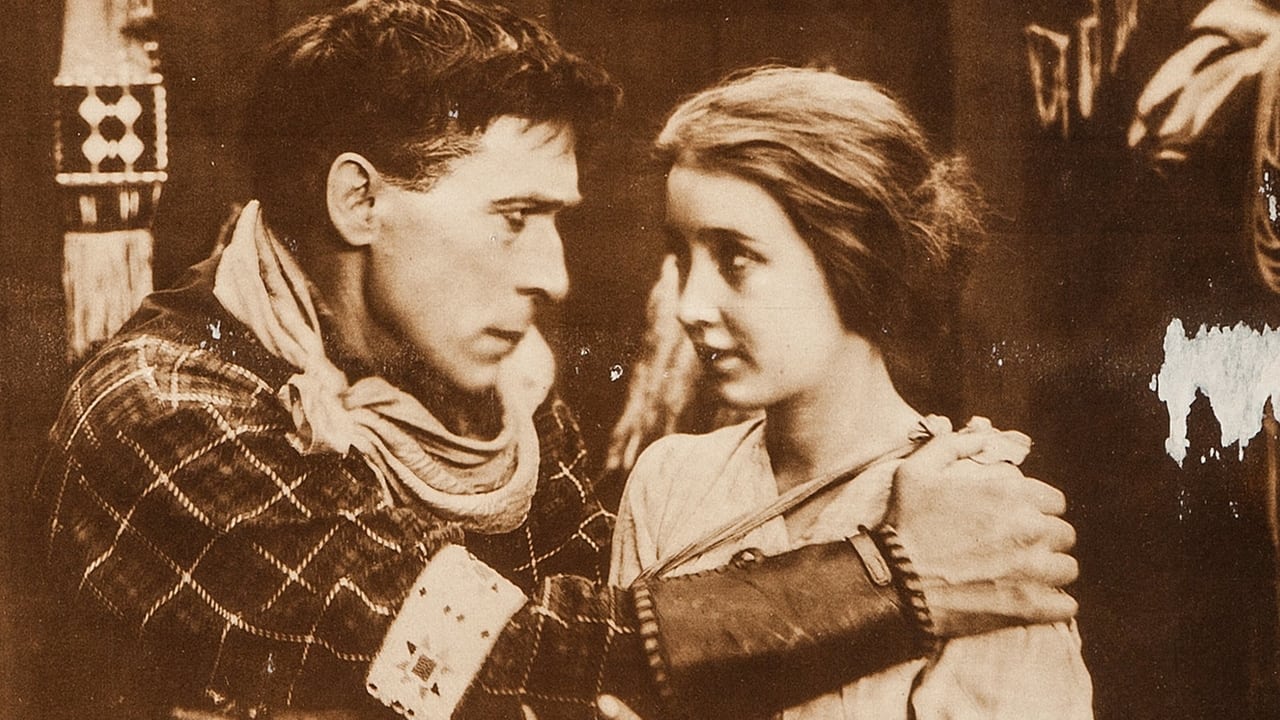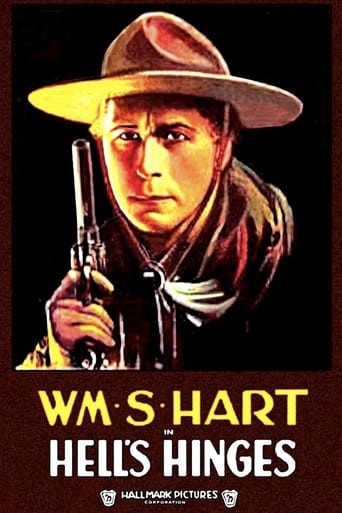

Fascinating silent western about a gunslinger who is reformed by the love of a woman newly arrived in the lawless and Godless town of Hell's Hinges with her weak-willed brother, the town's new preacher. William S. Hart directs and stars as the gunslinger, Blaze Tracy. An appropriate name for his character given the fiery climax of the film, which is a little reminiscent of the western High Plains Drifter made many decades later. A really good movie made during Hollywood's infancy. One of the first westerns to show what the genre could be capable of. Well-paced with fine performances from Hart and the rest of the cast. If I had one complaint, it's that there are a lot of intertitles with a lot of text to read. A minor complaint, really. The film holds up very well today, despite its age. Man, over a century old. Crazy.
... View MoreHell's Hinges (1916) *** 1/2 (out of 4) Historic Western has William S. Hart playing "Blaze" Tracy, a notorious gunfighter who is evil pure through until he meets a young woman (Clara Williams) arriving in town with her Reverend brother (Jack Standing). Blaze is immediately attracted to the woman and soon he begins to have thoughts about changing his ways but the bad folks in town are trying to turn the Reverend into one of them. This is a pretty strong little movie even if it barely runs an hour and spends way too much of that time on top of a soap box. I was really impressed with what this film had to offer and I think it's fair to say that it deserves every bit of its reputation and status of being one of the first classics from the genre. The film is about good versus evil and religious versus non-religious and there's no question what side the film is on. I think the film spends too much time preaching to us but this is a small problem and one that isn't overly distracting. With that said, the film contains some very memorable shots including the first look at the town known as Hell's Hinges. I love the high shot overlooking the town where we get a good look at all the evils going on within this short take. The scene will take your breathe away as it's such a terrific shot and it lets you know everything you need to know about this place. We also get another terrific shot towards the end of the movie when the church is attacked and we get to see it's aftermath. Hart is terrific in his role and he does very good job at showing off the evils of his character but the actor also makes us believe his changing. I think the change happens too fast but there's no question Hart owns this role and really makes it a memorable character. Williams and Standing are also very good as is Alfred Hollingsworth in his role. Jean Hersholt is somewhere in the film but unspotted by myself as is John Gilbert in his first screen appearance. Apparently Hart directed the majority of the film even though he doesn't get credit for it and I must say that the entire film is quite an impressive achievement even if it doesn't run as long as some of the films were starting to do at the time. The movie contains some memorable characters, some terrific shots and a rather rousing ending and all of this makes it a must see.
... View MoreThis William S. Hart film is an exciting film to watch--particularly at the end. However, it's almost like two separate films grafted not too seamlessly together. Part of the film is a morality play about God and redemption. In this regard, the film is awfully "heavy-handed" and melodramatic. It probably played pretty well back in 1916, but today it just looks very, very, very preachy. The other part is about Hart taking revenge on an evil little town by burning it down and killing a lot of scumbags in the process--and is very reminiscent of Clint Eastwood's HIGH PLANES DRIFTER. As you can guess, the two goals of the film can't exactly work together. It's a lot like combining TERMINATOR with THE GREATEST STORY EVER TOLD!!! As a result, the strong religious message will turn off many and the violence and almost demonic reaction of Hart when he takes retribution will most likely turn off Evangelical Christians. A very odd and muddled film indeed. But, I must also say that despite the stupidness of the plot, the final portion of the film when the city is burned to the ground is amazing and breathtaking to watch. The film earns a seven just for this and the film is well worth seeing because of this.
... View MoreThere is a strong Christian content to the movie that most future westerns would not bring up (at least not like this). The main character, Blaze Tracy, goes from being the toughest, meanest guy in town to a defender of the Christian faith, although in a very individual way, i.e. no church affiliation. The plot centers greatly around faith and lack of faith. The events can be spiritually interpreted in a number of cases. This movie is no simple western.
... View More